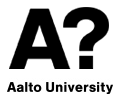Following a series of posts on the Finnish National Board on Research Integrity TENK (post 1, post 2, post 3, post 4), this post shares information on a useful source of information related to research misconduct worldwide: Retraction Watch, https://retractionwatch.com/.
As reported in Wikipedia (accessed 7.10.2019), Retraction Watch is a blog that reports on retractions of scientific papers and on related topics, set up to increase the transparency of the retraction process. The rationale when launching the blog in 2010 was that “retractions of papers generally are not announced, and the reasons for retractions are not publicized. One result is that other researchers or the public who are unaware of the retraction may make decisions based on invalid results.”
New cases are regularly reported in the Retraction Watch webpage and Twitter. Recently, I learned via the Twitter sharing of “When CVs Are Too Good to Be True”, by https://www.insidehighered.com(see also post 4). Some years ago, “Sparks fly in Finland over misconduct investigation” was close for me: https://retractionwatch.com/2016/02/09/sparks-fly-in-finland-over-misconduct-investigation/.
Also in the research field of atomic layer deposition – the blog author’s (Puurunen) field since 1998 – there has been a recent case, which has been hinted as potentially interesting to Retraction Watch. Here, the authors of one review article published in 2018, https://doi.org/10.1002/admi.201800581, had reused – by rephrasing – a significant portion of original contents of another review article published in 2017, http://doi.org/10.1039/C6CC05568K, without citing the original source. This I have learnt to call plagiarism. The journal was contacted, after one of the authors of the original review noticed their text had been copied. An investigation was carried out, after which the journal issued a “correction” to correct for the plagiarism (without calling it plagiarism though) by effectively retracting a portion of the article (without calling a retraction though). The correction has a separate DOI and can be found in: https://onlinelibrary.wiley.com/doi/10.1002/admi.201801853. The article from 2018 remains unchanged (as I see), and it is likely that most readers of that article will never notice that part of it has been effectively retracted. Services like Mendeley send out recommendations to read this article e.g. to me, which I find disturbing (see tweet 1 and tweet 2). The shout-out to Retraction watch can be seen in: https://twitter.com/mmcb_mse/status/1180488464489316353. It is interesting to see, what follows – if anything.

